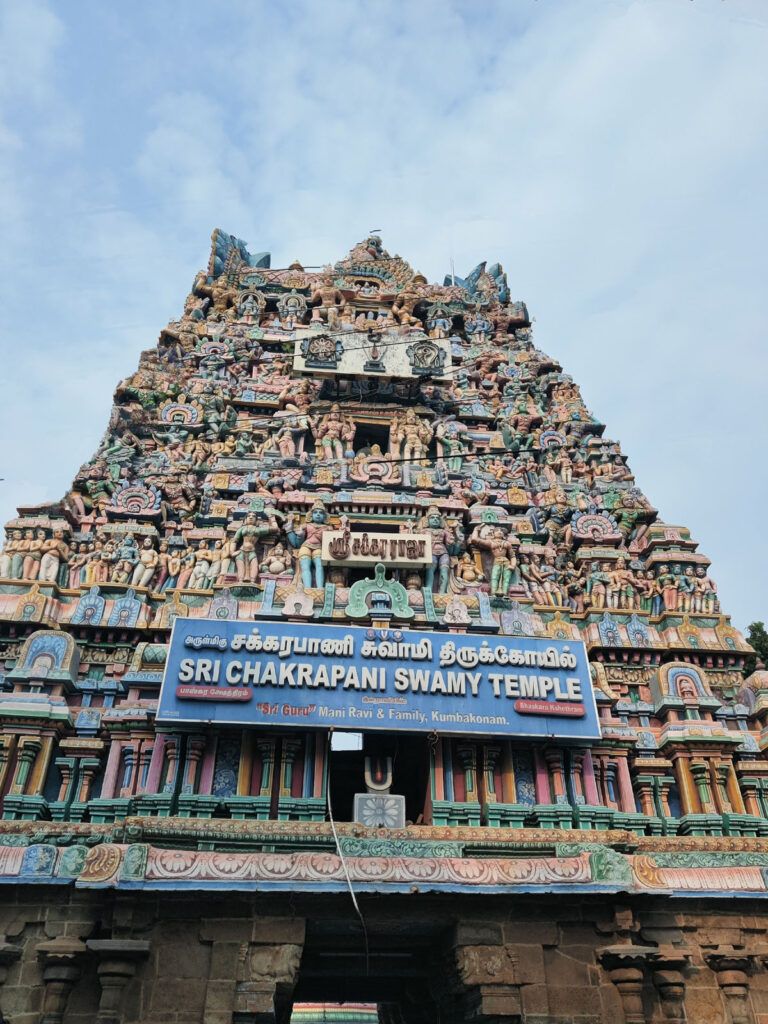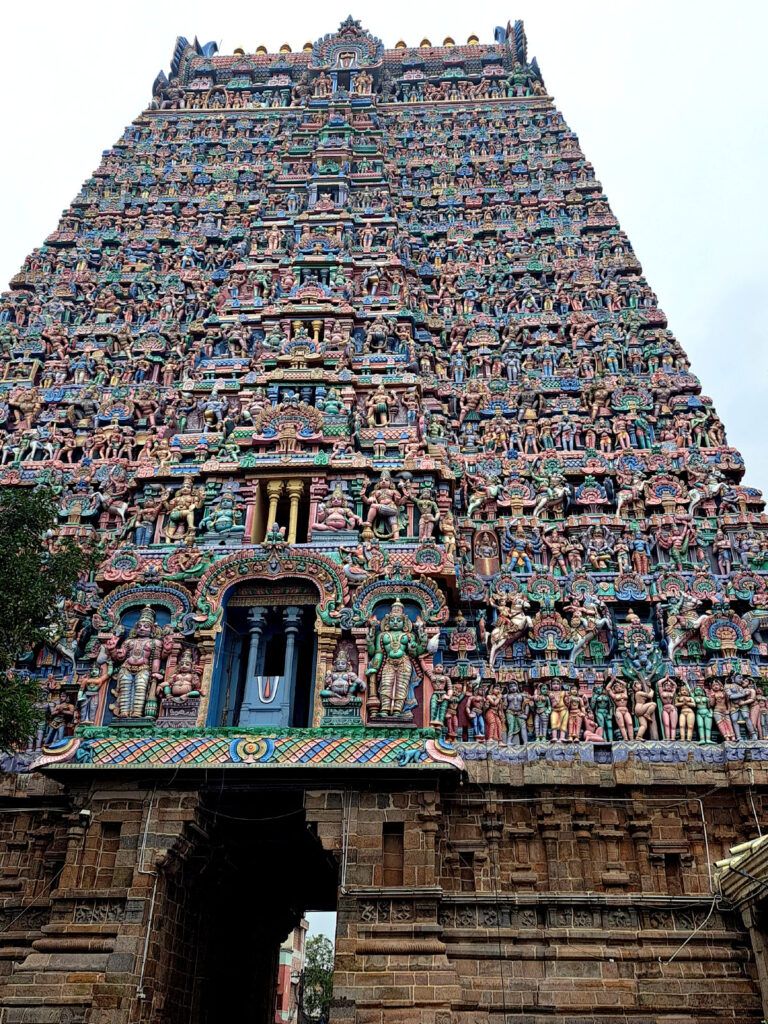9 CE Prasat Preah Vihear Temple of Lord Shiva in Cambodia
Prasat Preah Vihear Temple: Oh, hello there, little explorers! Come on over, gather ’round! It’s your favorite tour guide here, and I’ve got an absolutely wild adventure planned for us today. Our destination is the magnificent Prasat Preah Vihear Temple, a truly breathtaking place. Imagine climbing to the very, very top of a giant, green mountain, higher than you’ve ever been, and right there, perched like a secret fortress on the edge of a cliff, we’ll find an ancient stone castle! It’s so old, it’s practically seen a thousand years of sunrises! So, get ready to imagine flying, because we’re about to discover the sheer magic of this “temple in the sky”!
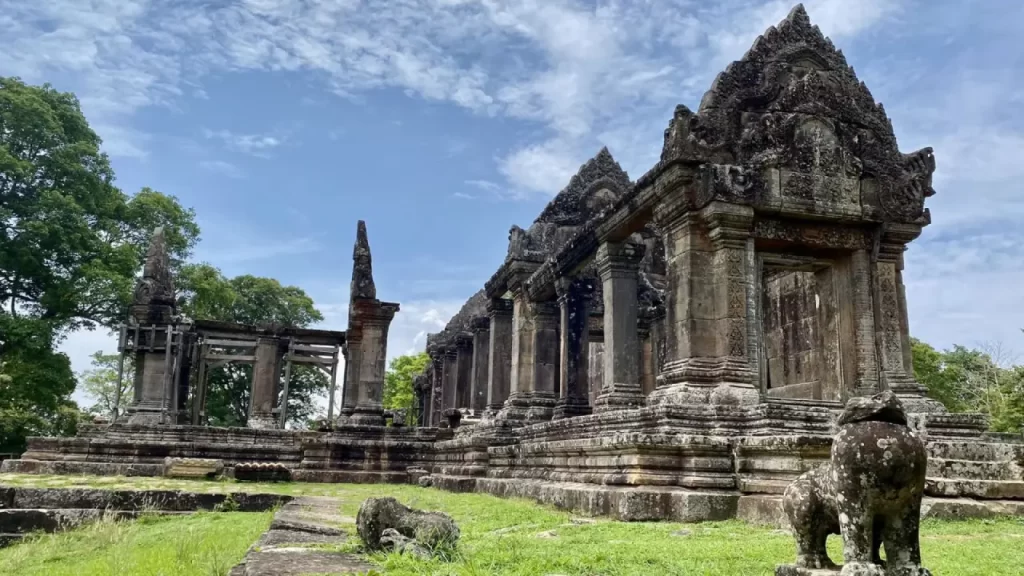
Contents
- 0.1 Welcome to Prasat Preah Vihear Temple: The Temple That Touches the Clouds!
- 0.2 The Epic Tale of Its Rise: History of Prasat Preah Vihear Temple
- 0.3 The Home of the Mighty Mountain God: Legend of Prasat Preah Vihear Temple
- 0.4 Why This Place is So Hugely Important: Significance of Prasat Preah Vihear Temple
- 0.5 Carved Stories and Heavenly Pathways: Architecture of Prasat Preah Vihear Temple
- 0.6 Whispers from the Past: Myths and Beliefs of Prasat Preah Vihear Temple
- 0.7 When Can We Visit the Sky Temple? Temple Timings for Prasat Preah Vihear Temple
- 0.8 More Wonders Nearby: Places to Visit Near Prasat Preah Vihear Temple
- 1 The Great Border Tug-of-War: The Preah Vihear Temple Dispute
Welcome to Prasat Preah Vihear Temple: The Temple That Touches the Clouds!
Ever looked up at the sky and wished you could reach out and tickle a cloud? Well, when you’re at Prasat Preah Vihear Temple, you’ll feel like you’re almost there! This incredible temple isn’t hiding in a busy city or sitting on flat ground. Oh no, it’s built right on the very, very edge of a towering cliff, way up high in the Dangrek Mountains. Sometimes, when the morning mist rolls in, it looks like the clouds are actually floating below the temple, making it seem like it’s a giant, magical island floating in the air!
This isn’t just any old building where people pray; it’s a super famous and incredibly important place in Cambodia, a beautiful country in Southeast Asia. It’s like a super special, secret home for the gods, built by ancient kings who wanted to show just how much they loved their deities and how powerful their kingdoms were. Every single stone you see, every tiny carving, every long pathway at Prasat Preah Vihear Temple has a story tucked inside it – stories of powerful kings, wise gods, and a deep, deep connection to the heavens above. So, let’s pretend we have little bird wings and gently glide up to this amazing place to uncover all its wonderful secrets together!
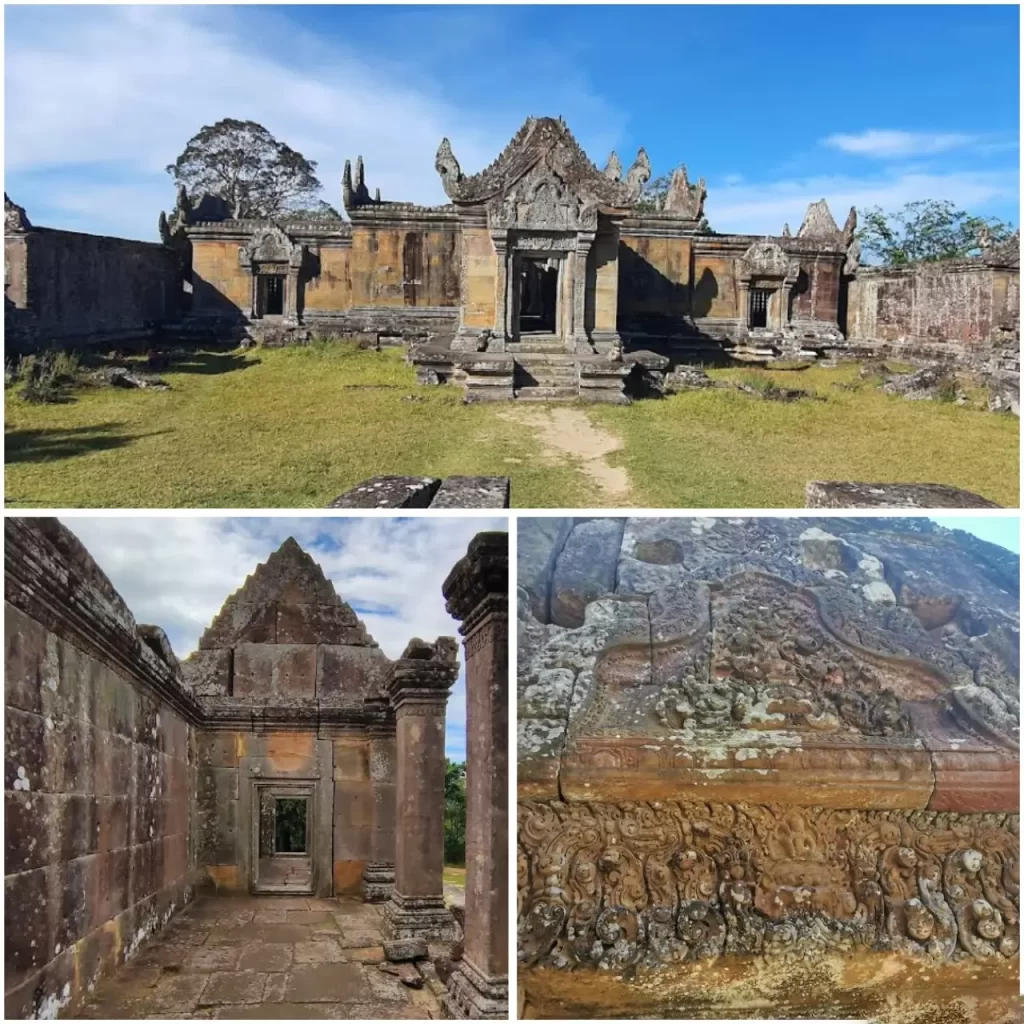
The Epic Tale of Its Rise: History of Prasat Preah Vihear Temple
Can you even begin to imagine building something enormous, not with roaring giant cranes and rumbling trucks like we have today, but just with the strength of human hands, strong animals like elephants, and incredibly clever ideas? That’s exactly how Prasat Preah Vihear Temple came to be, slowly but surely, stone by heavy stone, over many, many, many years. It truly shows how unbelievably smart and determined people were a long, long time ago!
The story of this temple’s beginning goes way, way back in time, even before your great-great-great-great-grandparents were even a twinkle in anyone’s eye! It first started being built around the 9th century, which means it’s over 1,100 years old! Can you even wrap your mind around that many candles on a birthday cake? It’s like a really, really, really old grandpa, but instead of skin and bones, it’s made of solid, ancient stone!
The kings who started all this amazing work were part of a huge and mighty kingdom called the Khmer Empire. These kings were incredibly powerful, and their empire stretched across a large part of what we now call Southeast Asia. They especially worshipped Hindu gods, and one of their absolute favorites was Lord Shiva, who is often thought of as living on high mountains and serene, snowy peaks. So, building a temple way up high on a cliff was their special way of showing how important and divine Lord Shiva was to them. It was like building him a super-duper, exclusive penthouse suite, right there in the sky! This devotion fueled the creation of Prasat Preah Vihear Temple.
Many different kings added to the temple as the centuries rolled by, just like adding new, exciting chapters to a grand adventure book. The very first kings started with smaller, simpler shrines. Then, later kings, like Suryavarman I in the 11th century, added more buildings and longer pathways, making the temple bigger and grander. But it was during the time of Suryavarman II, who also had a hand in building the incredibly famous Angkor Wat temple, that Prasat Preah Vihear Temple truly blossomed into the amazing place we see and explore today. He added those magnificent, towering gateways (we’ll definitely talk about them soon!) and the very long, majestic pathways, making the whole temple complex stretch for almost a kilometer, like a grand, red carpet leading straight up to the heavens themselves!
Each king who worked on Prasat Preah Vihear Temple left their own special mark, just like an artist carefully adds their unique signature to a priceless masterpiece. They used incredible skills to carve detailed stories and beautiful images of gods and goddesses into the hard stone, turning the entire temple into a giant, silent storyteller that whispers tales from long, long ago. It’s absolutely mind-boggling to think that this Prasat Preah Vihear Temple has stood strong through all the pouring rain, strong winds, and bright sunshine for over a whole millennium! That’s tough!
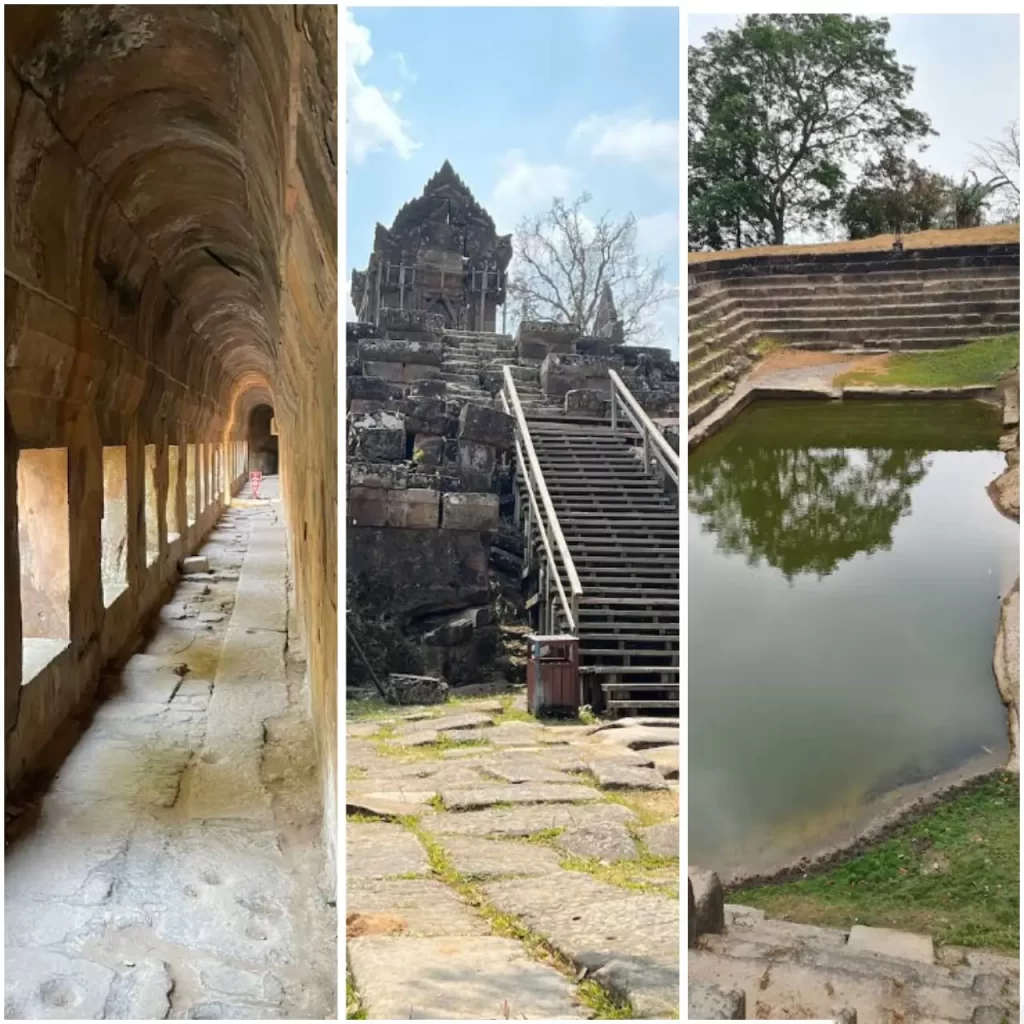
The Home of the Mighty Mountain God: Legend of Prasat Preah Vihear Temple
You know, every grand and ancient place has its own special story or a deep belief that makes it even more magical, almost like a fairy tale. For Prasat Preah Vihear Temple, the main legend is all about its very special connection to the powerful Hindu god Lord Shiva.
Imagine Lord Shiva as a very mighty and calm god, often thought of as living on high mountains, amidst peaceful, snowy peaks, spending his time in deep meditation. Because Prasat Preah Vihear Temple is built so unbelievably high up, right on the edge of a towering cliff, the ancient kings believed it was the most perfect and fitting home imaginable for him. The temple was built specifically to honor a form of Lord Shiva called Sikharesvara, which literally means “Lord of the Summit” or “Lord of the Mountain.” Just that name itself tells us that the temple was always meant to be a special dwelling place for Shiva, high above the everyday world, where he could peacefully watch over everything and everyone.
The wise kings who designed and built this magnificent Prasat Preah Vihear Temple believed that by placing the temple so high, they were creating a direct, special staircase that connected the human world down below with the divine world of the gods up above. It was their ultimate way of showing their profound respect and devotion, hoping to receive abundant blessings from Lord Shiva for their entire kingdom and all their loyal people. They believed that a temple high in the sky would ensure the prosperity, safety, and unwavering protection of the realm.
Now, while Prasat Preah Vihear Temple isn’t mentioned by its exact name in the very oldest Hindu holy books like the Vedas or the Puranas, its entire purpose and masterful design fit perfectly with those ancient beliefs. The idea of Lord Shiva as the “Lord of the Mountain” (sometimes called Girisha or Parvatishvara in those old, sacred texts) is a very central and important part of worshipping him. So, even if you won’t find the words “Prasat Preah Vihear Temple” written in a specific verse from a Purana, the very heart and soul of the temple speak loudly to those age-old spiritual ideas. It’s like finding a picture that perfectly matches a story you’ve heard, even if the picture doesn’t have the story’s title written on it!
Think of it as a giant, incredibly beautiful stone pathway that leads straight up to the sky, where Lord Shiva lives, always offering a calm, powerful, and watchful presence to all who make the journey to worship at this amazing Prasat Preah Vihear Temple.

Why This Place is So Hugely Important: Significance of Prasat Preah Vihear Temple
The Prasat Preah Vihear Temple isn’t just an old and pretty building; it’s actually super, duper important for so many amazing reasons! It’s not just a collection of stones; it’s a living piece of history, an incredible work of art, and a powerful symbol.
Firstly, it’s a UNESCO World Heritage Site. Have you heard of UNESCO? It’s like a special, global club that decides which places on Earth are so unique and wonderful that they absolutely need to be protected forever, for everyone in the world, now and in the future, to see and enjoy! Prasat Preah Vihear Temple earned this special title because it’s considered one of the most important and breathtaking ancient monuments in the entire world. It’s a treasure that truly belongs to all of humanity, a global gem.
Secondly, it’s an architectural marvel. Imagine trying to build a very long series of temples, open courtyards, and beautiful pathways, all going uphill, using only enormous, heavy stones, without any of the noisy, modern machines we have today. That’s exactly what the ancient builders did here at Prasat Preah Vihear Temple! The way it stretches gracefully along the mountain, like a giant, stony spine leading right to the sky, is truly, truly amazing. It’s a shining example of Khmer architecture, showing just how incredibly clever, skilled, and patiently dedicated those ancient builders were. It’s a masterpiece of planning and construction.
Thirdly, it holds deep historical and cultural importance for Cambodia. Because it was built by the mighty Khmer kings, it tells us so much about their religious beliefs, their incredible artistic talents, and how they lived their lives so many centuries ago. It’s not just a building; it’s a powerful symbol of Cambodian heritage and deep national pride, connecting the people of Cambodia today with their glorious and hugely creative past. It’s a constant reminder of a time when their empire was grand, influential, and built wonders like Prasat Preah Vihear Temple.
Fourthly, its location is absolutely breathtaking. Being perched right on the edge of a towering cliff, with unbelievably vast views stretching out for miles and miles below, makes Prasat Preah Vihear Temple incredibly unique. It literally feels like a “temple in the sky,” offering a spiritual experience that is unlike visiting any other place on Earth. The panoramic views of the Cambodian and Thai plains below are so wide and beautiful, you’ll feel like a gentle giant looking over a miniature, green world. It’s a sight you won’t ever forget once you see it.
Finally, it’s a place of deep devotion. Even though it’s very, very old, people still travel to Prasat Preah Vihear Temple today to pray, to reflect, and to feel a powerful connection with the spiritual energy of this sacred place. It serves as a living reminder of the strong faith and unwavering belief that inspired its creation so many centuries ago, and that very same faith continues to be felt by visitors today. It’s a place where the past feels very much alive.
So, Prasat Preah Vihear Temple is significant not just because it’s old or simply pretty, but because of its astonishing engineering, its deep cultural stories, its incredible and truly awe-inspiring location, and its enduring spiritual power. It truly is a unique wonder of the world!
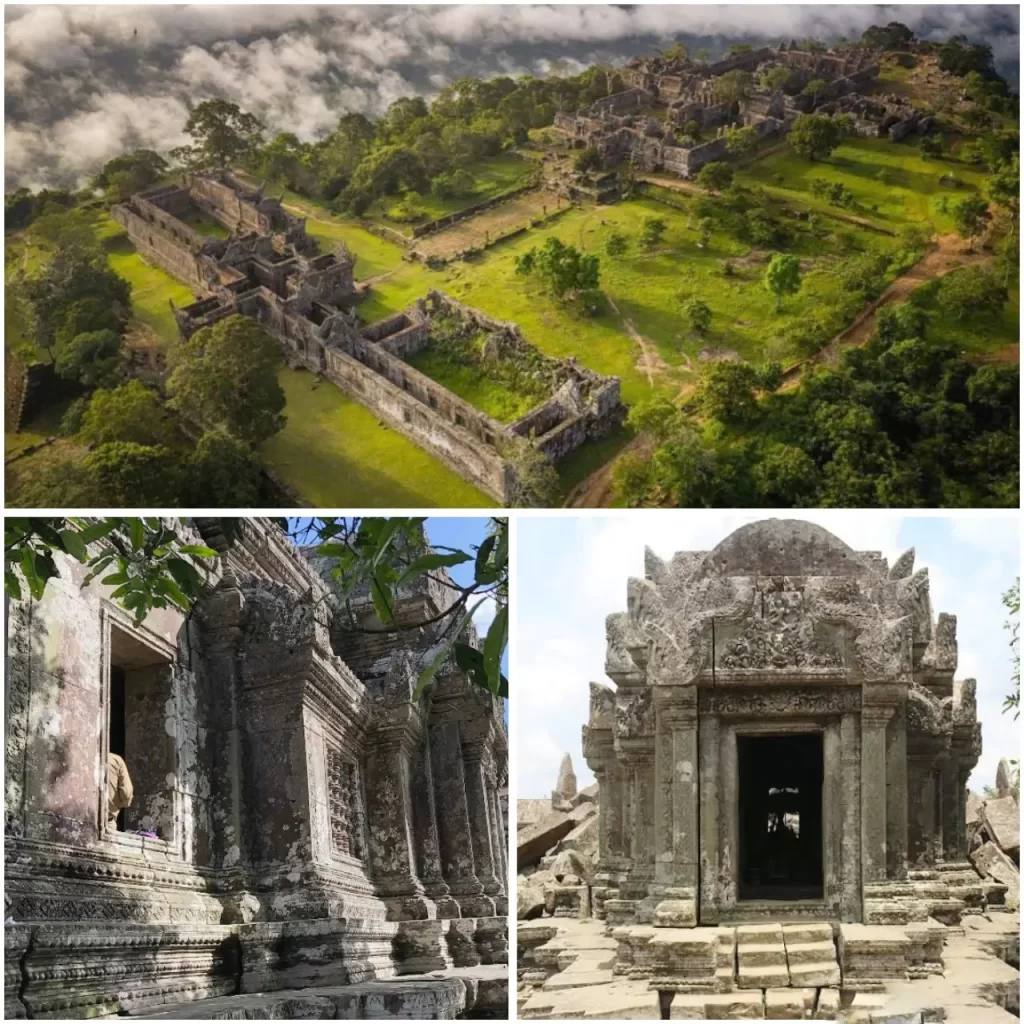
Carved Stories and Heavenly Pathways: Architecture of Prasat Preah Vihear Temple
Now, my curious friends, let’s talk about just how truly amazing Prasat Preah Vihear Temple is built! It’s not like a single, square house; it’s more like a wonderful series of beautiful buildings connected by long, grand paths, all leading upwards. It’s like a giant, divine staircase meant for gods!
Imagine you are walking on a very long, slightly uphill pathway, getting closer and closer to something magnificent. That’s exactly how you approach Prasat Preah Vihear Temple. The temple is designed like a series of five Gopuras. What’s a Gopura, you ask? Well, it’s a special tower or a grand gateway that marks the entrance to different, important parts of the temple. These Gopuras are not just simple doors; they are beautifully carved, elaborate buildings themselves, often with impressive, decorated roofs! They are like little temples before the main one.
As you walk from one Gopura to the next, you’ll discover fascinating features:
- Long Causeways: These are like grand, perfectly paved roads leading you upwards. They were built very thoughtfully to make the journey to the main shrine feel like a slow, respectful, and very grand climb towards the heavens. Imagine ancient kings and queens walking these majestic paths with all their royal escorts! It must have been quite a procession, building up excitement with every step.
- Courtyards and Galleries: In between each of the magnificent Gopuras, you’ll find open, peaceful spaces called “courtyards” and then long, covered hallways called “galleries.” The walls of these galleries are often absolutely covered with the most amazing carvings you can imagine.
- Intricate Carvings: This is where the real artistic magic of Prasat Preah Vihear Temple comes alive! Look very closely at the walls, the sturdy pillars, and even the intricate doorframes. You’ll see incredibly detailed carvings of Hindu gods and goddesses. You might spot Lord Shiva, often shown dancing gracefully, or Lord Vishnu, sometimes depicted sleeping peacefully on a giant snake called Ananta! You’ll also see many other divine beings, mythical creatures, and scenes from ancient Hindu stories. One of the most famous stories you might see carved is the Churning of the Ocean of Milk. This incredible tale, found in ancient texts like the Puranas, describes how the gods and demons worked together to churn the cosmic ocean to get the elixir of immortality, which was supposed to bring eternal life! These carvings are like giant stone comic books, telling exciting and meaningful stories from thousands of years ago. Every little detail has a meaning!
- Libraries: Within the temple complex, you’ll also find smaller, often square-shaped buildings that are traditionally called “libraries.” They weren’t libraries for paper books like we have today, but they were likely used to store sacred texts written on dried palm leaves, or perhaps other precious and important items belonging to the temple. They were like the temple’s treasure chests.
- The Main Sanctuary (Prasat): At the very top, past all the grand Gopuras, the peaceful courtyards, and the fascinating galleries, you finally reach the main part of the temple, which is called the Prasat. This is the holiest spot, where the main deity, Lord Shiva as Sikharesvara, was worshipped. This is the absolute highest point of the entire complex, and the views from here are truly, truly breathtaking. You can see for miles and miles, as far as the eye can see, all the way to the horizon! It’s a feeling like no other.
The entire Prasat Preah Vihear Temple is built on an axis, which means it’s laid out in a straight line, rising slowly and majestically towards the edge of the cliff. It’s made mostly of sandstone, a very strong type of rock that is also surprisingly good for detailed carving. The most amazing thing is thinking about how the ancient builders managed to transport these enormous, heavy stones and build such intricate structures on such a steep and challenging mountain location, using only simple tools and their incredible skill, patience, and sheer determination! It’s a true wonder of ancient engineering and artistic brilliance.
Whispers from the Past: Myths and Beliefs of Prasat Preah Vihear Temple
You know, temples aren’t just quiet places for praying; they are also places where old stories, cherished beliefs, and sometimes even a touch of magic seem to live on, carried on the very air! Prasat Preah Vihear Temple has its own share of fascinating myths and deeply held beliefs that have been passed down through countless generations.
One of the strongest beliefs associated with Prasat Preah Vihear Temple is its very special role as a cosmic mountain. In ancient Hindu and Khmer beliefs, mountains were not just big lumps of rock; they were seen as sacred places where gods truly lived, acting as powerful links between the earthly world down below and the divine heavens up above. By building this temple on such an incredibly high cliff, the kings were literally creating a physical representation of this cosmic mountain right here on Earth. They believed this made the temple a potent connection point between humans and the divine realms. It was strongly believed that the very act of ascending the temple, moving from one Gopura to the next, was like a spiritual journey itself, purifying the soul and bringing one closer to the sacred abode of the gods. Imagine that – every step taking you closer to the divine!
Another important belief centers around the protective powers of all the deities and mythical creatures that are so intricately carved into the temple walls. These beautiful carvings were not just put there for their beauty alone; they were also believed to actively protect the temple and everyone who worshipped there from evil spirits, negative forces, and to bring good fortune and abundant blessings. You can imagine farmers living in the plains below looking up at the majestic Prasat Preah Vihear Temple and feeling that it was a powerful guardian, watching over their lands, their crops, and their families from its high perch.
There are also many local stories, passed down through the years, about the temple’s incredible enduring strength and its remarkable resilience. Despite facing many challenges, including conflicts and even natural disasters like earthquakes or big storms over the centuries, the temple has stood firm and proud. Many local people believe that this steadfastness is due to the powerful blessings of Lord Shiva and all the other deities enshrined within its sacred walls. It is seen as a powerful symbol of the enduring spirit of the Khmer people and their strong, unshakeable faith. It’s like the temple itself has a protective shield!
Imagine the gentle wind whistling through the ancient, worn stones of Prasat Preah Vihear Temple. People say that if you listen very, very closely, with your heart and your ears, you can almost hear the whispers of these old stories, sacred beliefs, and timeless wisdom carried on the breeze, telling tales from centuries past, just for you.
When Can We Visit the Sky Temple? Temple Timings for Prasat Preah Vihear Temple
If you’re planning an amazing trip to Prasat Preah Vihear Temple, it’s super important to know when you can visit this incredible “temple in the sky.” You want to make sure you have enough time to explore every single detail and take in all those breathtaking views!
Generally, Prasat Preah Vihear Temple is open and welcoming to visitors every single day of the week, from early morning until late afternoon.
- It usually opens its gates around 7:00 AM (which is pretty early, but great for avoiding the midday heat and seeing the beautiful morning light!) and stays open until about 5:00 PM or 5:30 PM. This gives you plenty of daylight hours to wander, take photos, and explore every nook and cranny.
- However, because of its very unique location high up on a mountain, and sometimes due to tricky weather conditions (like very heavy rain during the monsoon season, which can make the mountain roads a bit slippery), or even special local events or holidays, the exact timings might sometimes change a little bit. It’s always a good idea to check!
- It’s always a very smart idea, like a super-prepared explorer, to check with local tour operators or official sources closer to your travel date to confirm the precise opening and closing times. Also, remember that actually getting to the temple itself, going up that incredibly steep mountain road, can take some time, so it’s always best to start your visit early in the day to have plenty of time to explore all the amazing parts of Prasat Preah Vihear Temple without feeling rushed. You want to soak it all in!
Coming early in the morning can also be a truly special treat! The air is usually cooler and fresher then, and you might even catch the beautiful mist rising from the vast plains below. When this happens, the temple looks even more magical, truly appearing as if it’s floating on soft, white clouds, like something out of a dream!
More Wonders Nearby: Places to Visit Near Prasat Preah Vihear Temple
While Prasat Preah Vihear Temple is definitely the shining star of our adventure, there are a few other interesting places and exciting experiences you can find nearby, especially if you have extra time and want to explore more of Cambodia’s rich history and beautiful nature. Think of it as bonus adventures!
- Koh Ker (Ancient Temple Complex): If you take about a two-hour drive from Prasat Preah Vihear Temple, you can discover another fascinating ancient site called Koh Ker. This was once a bustling capital city of the Khmer Empire, even before Angkor Wat became super famous! It’s most famous for its unique, towering, pyramid-shaped temple called Prasat Thom, which looks a bit like the ancient pyramids you might see in pictures from Mexico or Egypt, but with a cool Khmer twist! It’s usually less crowded than some of the more famous temple sites, offering a wonderful sense of wild, untouched history and quiet, peaceful exploration.
- Preah Khan Kompong Svay (Sprawling Temple Complex): This is another very large and spread-out temple complex, often called “Preah Khan of Kompong Svay” to avoid confusion with another temple that has a similar name. It’s quite remote and not visited by as many people, which offers a truly adventurous experience for those who absolutely love exploring ancient ruins nestled deep in a jungle setting. It’s a bit further away, but for serious history lovers and explorers, it’s absolutely worth the journey to see something truly off the beaten path.
- Local Villages and Markets: As you travel through the area surrounding Prasat Preah Vihear Temple, you’ll pass through charming Cambodian villages. This gives you a wonderful chance to see how local people live their daily lives, perhaps taste some delicious traditional food that you’ve never tried before, and maybe even visit a small local market where you can see beautiful handmade crafts and fresh produce. It’s a great way to experience the authentic culture and friendly spirit of the region, beyond just the big temples.
- Stung Treng Province: If you travel a little further south, you can explore the province of Stung Treng. This area is known for its beautiful natural landscapes, including parts of the mighty Mekong River and its important wetlands. It’s a perfect place for nature lovers, offering fantastic opportunities for peaceful boat trips, exciting birdwatching (spotting exotic birds!), and simply enjoying the serene beauty of Cambodian rivers and untouched nature.
While these additional places might require a bit more travel time and planning, they offer a deeper dive into the incredible history, vibrant culture, and stunning natural beauty of Cambodia that surrounds the magnificent Prasat Preah Vihear Temple. So many things to see!
The Great Border Tug-of-War: The Preah Vihear Temple Dispute
Imagine two friends, Cambodia and Thailand, living next to each other. They share a long border, and for many years, the exact line where one friend’s land ends and the other’s begins wasn’t always perfectly clear. Now, imagine a super valuable toy, like a magnificent ancient castle (our temple!), sitting right on that fuzzy border. Both friends love the toy and believe it belongs to them! That’s what happened with Prasat Preah Vihear.
How the Problem Started (The Early 1900s):
- French Maps and a Wiggly Line: Back in the early 1900s, Cambodia was protected by France (like a big brother helping a smaller one). France and Siam (which is what Thailand was called back then) made agreements to draw the border more clearly. They even drew maps!
- The Problematic Map: One particular map, made by French surveyors in 1907, showed Prasat Preah Vihear as being on the Cambodian side. This map was given to Siam, and for a while, Siam didn’t officially complain about it. However, later surveys by Thailand suggested the temple was actually on their side of the natural watershed (the line where rain would flow down one side of the mountain or the other). But by then, many years had passed.
The First Big Fight (1950s – 1960s):
- Cambodia Gets Its Freedom: After Cambodia became independent from France in 1953, Thailand sent troops to the temple area. Cambodia said, “Hey, that’s our temple!” and asked Thailand to leave.
- Going to Court (The ICJ): When they couldn’t agree, Cambodia decided to take the argument to a very important international court called the International Court of Justice (ICJ), located in a faraway place called The Hague in the Netherlands. It’s like a special court for countries to settle big disagreements peacefully.
- The 1962 Ruling: In 1962, after listening to both sides, the ICJ made a big decision. They looked at the old maps and how Thailand had acted (or not acted) about them for many years. The court ruled that Prasat Preah Vihear was indeed in Cambodian territory.
- The ICJ said that even though the map might have drawn the line a bit differently from the natural watershed, Thailand had accepted the map over the years without a clear protest. This is like saying, “If you don’t say anything for a long time when someone thinks something is theirs based on a map you saw, you can’t suddenly change your mind!”
- The court also ordered Thailand to remove any soldiers or police from the temple area.
New Fights and UNESCO (2000s – 2010s):
- World Heritage Status: For many years after 1962, things were mostly calm. But in 2008, Cambodia wanted the temple to be recognized by UNESCO as a World Heritage Site. This is like putting a big “V.I.P.” sticker on a place because it’s so important for everyone in the world.
- Renewed Tensions: When Cambodia applied to UNESCO, Thailand got worried because the application seemed to include not just the temple itself, but also some land around it that Thailand still believed was theirs. This started new arguments and even some serious fighting and border clashes between the soldiers of both countries between 2008 and 2011. It was a very sad and difficult time, with people getting hurt and thousands having to leave their homes.
- Back to Court (ICJ Interpretation): Because of the continued fighting and disagreements over the surrounding land, Cambodia went back to the ICJ in 2011, asking for the 1962 ruling to be clarified. They wanted the court to explain exactly what “vicinity” meant.
- The 2013 Ruling: In 2013, the ICJ gave another ruling. This time, it said very clearly that Cambodia has sovereignty over the entire promontory (the rocky area, like a big nose coming out of the mountain) of Prasat Preah Vihear. It also reaffirmed that Thailand had to remove any forces from that area. While it didn’t give Cambodia the whole hill to the north, it definitely said the temple and its immediate surroundings belonged to Cambodia.
Today:
Since the 2013 ruling, things have been much calmer around Prasat Preah Vihear. The temple is firmly recognized as belonging to Cambodia, and while some border discussions might still happen in other areas, the main dispute over this amazing “temple in the sky” has been settled by international law.
Your Journey to the Sky Temple: How to Reach Prasat Preah Vihear Temple
Getting to Prasat Preah Vihear Temple is an adventure in itself, because it’s located in a more remote and mountainous part of Cambodia, very close to the border with Thailand. But don’t you worry, it’s a fun and exciting journey, part of the whole experience!
- From Siem Reap (The Most Common Starting Point): Most people who visit Prasat Preah Vihear Temple start their journey from Siem Reap, which is the famous city where all the incredible Angkor Wat temples are located. It’s a good starting point because it has a lot of places to stay, restaurants, and many easy ways to find transportation.
- By Road: From Siem Reap, it’s about a 3-4 hour drive (that’s about 200-250 kilometers, or roughly 125-155 miles, which is like driving from one big city to another!) to the base of the mountain where Prasat Preah Vihear Temple is located. You can hire a comfortable private taxi, or sometimes there are shared vans that can take groups of people. The main roads connecting Siem Reap to the base are generally in good condition, so it’s a smooth ride for most of the way.
- At the Base of the Mountain (The Super Exciting Part!): Once you reach the base of the mountain (this spot is often called Sra’em or simply “Preah Vihear base”), you cannot drive your own car or a regular taxi up the very steep and winding road to the temple itself. The road is very steep and needs a special kind of vehicle to get up there safely! You must hire a special 4×4 pickup truck (those big, strong trucks!) or, for a more adventurous and windy ride, a motorbike taxi (which locals call a “moto”). These vehicles are specially designed to climb that incredibly steep and winding mountain road safely and give you an amazing view on the way up! This part of the journey is super exciting, with incredible, panoramic views opening up as you go higher and higher!
- From Phnom Penh (Cambodia’s Capital City): If you’re coming from Cambodia’s capital city, Phnom Penh, it’s a much longer drive, typically around 6-7 hours (that’s about 400 kilometers or 250 miles). You can take a comfortable long-distance bus or hire a private car for this longer journey.
- Border Crossing (Important Historical Note): In the past, Prasat Preah Vihear Temple could sometimes be accessed from the Thai side of the border, as it sits right on the very edge. However, due to some past disagreements and conflicts over who owned the land (which we talked about before, like a big tug-of-war!), access from the Thai side is currently not generally open for tourists. The primary, safest, and recommended way to visit this magnificent temple is from the Cambodian side of the border. This ensures a smooth and peaceful visit.
Remember, because of its somewhat remote location and the exciting need for a special vehicle to go up the mountain, planning your transport in advance is always a super good idea. But trust me, the journey to Prasat Preah Vihear Temple is absolutely worth every minute for the incredible views, the ancient wonders, and the feeling of reaching the “temple in the sky” that await you at the very top! It’s an unforgettable trip!
Not satisfied with this content? Please feel free to visit wikipedia link.





